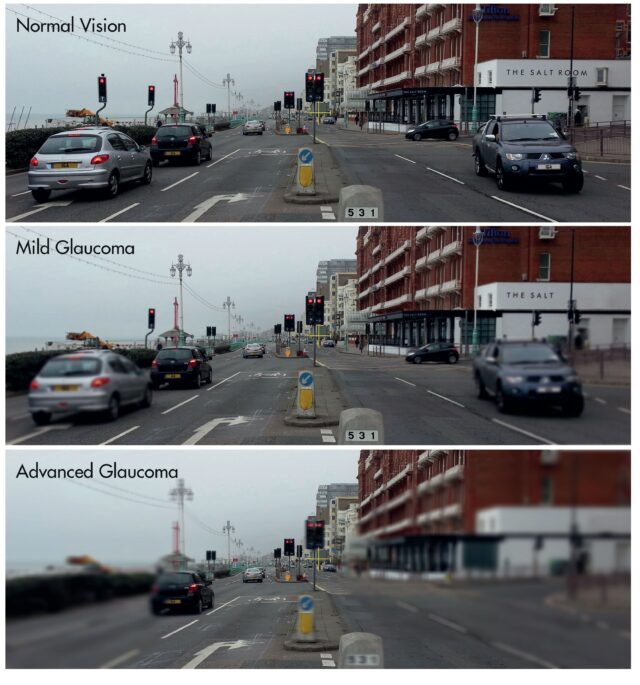PEOPLE need to make eye tests a priority to help reduce the risk of sight loss, experts are urging this World Glaucoma Week (March 6-12).
Glaucoma is the second leading cause of blindness in the UK. Due to its gradual onset many people don’t realise they have the condition before it is too late, yet if it is detected early it can often be managed more successfully.
It is estimated that there are 708,000 people living with the condition in the UK, however this number could be higher due to thousands of people not being referred for important checks during the height of the pandemic.
Research from Specsavers found that the number of eye tests fell by 4.3 million3 during the first lockdown and the number of people being referred to hospital for suspected glaucoma dropped by 43,000. NHS glaucoma appointments also fell by 11,062 during this time, meaning people were missing out on vital care.
Giles Edmonds, Specsavers clinical services director, says: ‘The number of people living with glaucoma in the UK will increase by around 18% in the next 10 years. While it cannot be cured, it can be prevented from worsening through regular monitoring and treatment – but early detection is key.’
What is glaucoma?
Mr Edmonds says: ‘Glaucoma is a common eye condition where the optic nerve, which connects the eye to the brain, becomes damaged. It’s usually caused by fluid building up in the front part of the eye, which increases the pressure inside.
‘There are several types of glaucoma which we can put into two main groups – chronic glaucoma and acute glaucoma. With chronic glaucoma, the visual loss can initially be very subtle and occurs just beyond your central vision, progressing slowly inwards towards your central vision and outwards into the periphery. Most patients will not be aware of this visual loss due to the way the eyes visual fields overlap, compensating for one another. Acute glaucoma is often sudden and painful and may present with other symptoms including blurred vision and haloes around lights.’
Who is at risk?
Mr Edmonds says: ‘There are several factors which can put you more at risk of developing glaucoma including your family history (which can increase the risk by up to four times) and your age. The risk of getting glaucoma rises from about two in 100 over the age of 40 to more than one in 20 for those aged 80+.
‘Ethnicity is also a factor as people of African-Caribbean and east Asian origin have a higher risk of glaucoma compared to those of European origin. And blood pressure can play a part too. While very high blood pressure can lead to an increase in intraocular pressure, low blood pressure can lead to insufficient blood supply to the optic nerve which can also cause problems.’
What can help?
For many years eye drops have been the most common form of treatment for glaucoma. They are used to decrease the amount of fluid in the eye, either by increasing the drainage of fluid out of the eye, or by reducing the amount of fluid that is made. However, other options such as surgery and laser treatment are available.
Joanna Bradley, Head of Support Services at Glaucoma UK, adds: ‘As glaucoma can often be symptomless, it’s crucial that people have regular eye tests so that it can be detected early and successfully managed. The earlier glaucoma is diagnosed, the higher the chances are of retaining useful sight. Being diagnosed with glaucoma can be frightening, but as a charity we are here to support those with the disease to live well, and to offer help and advice.’
For more information or to book an eye test visit www.specsavers.co.uk/eye-health/glaucoma




